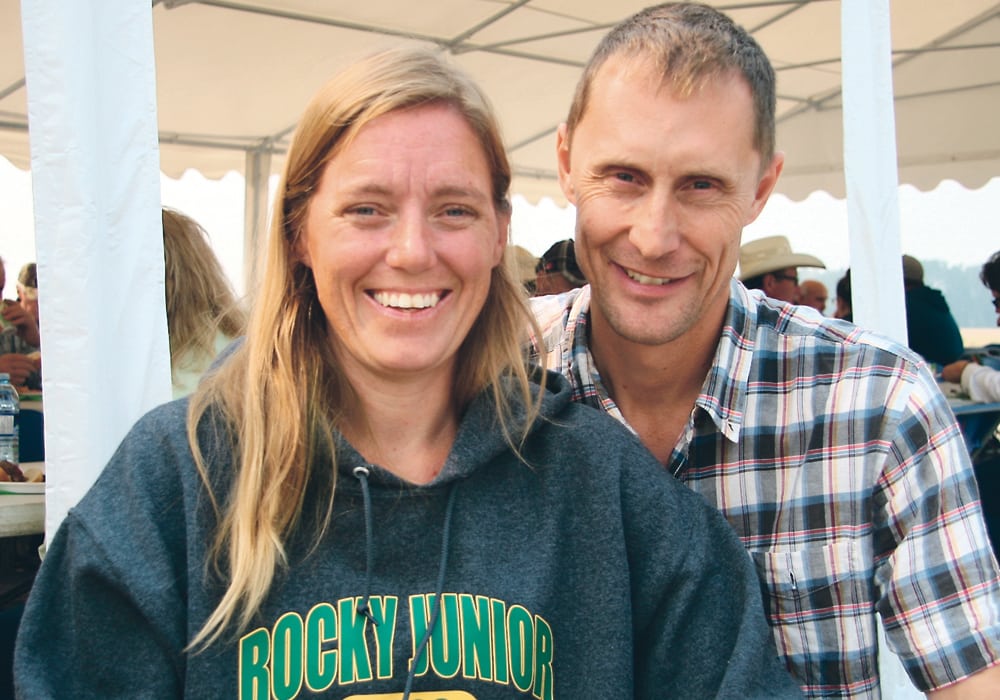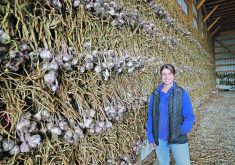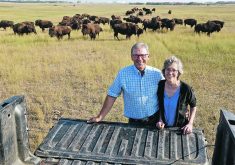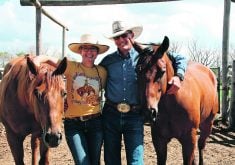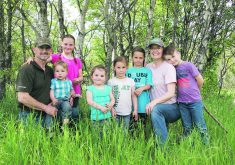On the Farm: Amy and Kevin Leitch take an old-fashioned approach to their venture but also embrace renewable energy
ROCKY MOUNTAIN HOUSE, Alta. — Kevin and Amy Leitch take sustainability seriously on their west-central Alberta farm.
Some of their practices are the old-fashioned approach of running a mixed farm and producing most of their own food, as well as adopting renewable energy technology.
They have made their new house energy efficient and use solar power, having done most of the work themselves. They plan to add a wind turbine soon.
Some of their drive for sustainability was out of necessity when they moved to this farm five years ago.
Read Also

Nutritious pork packed with vitamins, essential minerals
Recipes for pork
“We live on a knoll in the middle of nowhere in the middle of a quarter. When we chose to come here we ended up making the choice to go off grid financially. It was cheaper to do this than it was to bring in power,” Amy told a group of visitors from Clearwater County.
While they are close to Rocky Mountain House, there are few services in some parts of the county.
“We were quoted close to $40,000 to bring a line in. We are not even close to that for what we paid,” said Kevin.
He estimated they have spent less than $10,000 to set everything up. He is a bargain hunter and a handyman who is willing to take on big tasks.
They installed eight solar panels near their house. These produce about 1,000 watts but do not produce enough power, so they want to add more panels on different parts of the farm to capture energy.
They are also preparing to add a vertical access wind turbine. It is rated for 750 watts so on a 24-volt system it will give them a 30-amp charge to batteries.
Cloudy days and haze from smoke this year cuts back energy generation. Extra energy comes from a generator and propane is used to power home appliances and provide heat. The main floor of the house is heated with wood.
While the Alberta government has offered support for such projects they did not receive any grants, said Kevin.
“We didn’t do it for that. We wanted to do something different,” he said.
They have learned to balance their lives around when power is available.
“There are things that we have learned, and things that we will continually change because as we move forward we have upgraded our battery system and we will be placing more solar panels in different strategic areas,” Amy said.
They also try to produce all their own food.
“We raise everything to be sustainable for ourselves and any that is extra, then we share,” she said.
They raise goats, chickens, geese, turkeys and a few pigs as well as maintain a large garden.
Kevin works off farm in the oil patch so they decided they needed to find livestock that Amy and their four boys Ryder, 14, Reo, 11, Rexton, 9, and Rygaard, 6, could manage.
After researching goats for a year they settled on the meat breed, Kiko, and set up Will O’ the Wisp Paddocks Family Goat Farm.
The breed was created in the 1980s in New Zealand ,where feral goats were crossed with the dairy breeds Anglo-Nubian, Saanen and Toggenburg. Kikos are hardy, well-muscled and parasite resistant.
The goat kids are sold live to private clients or to Sungold Meats at Innisfail, Alta. Goat meat is found at Calgary Co-op stores.
“We cannot feed the demand for the goat meat,” she said.
This year kid goats weighing 50 pounds and up were sold for $250 to $280 each. Their goats are usually sold at around 70 lb. with a final yield of about 35 lb.
The goats are born in April and are ready for market by August. Kiko goats tend to produce twins and they have a few dairy goats that commonly have triplets.
Amy has set up a rotational grazing system on the hilly pastures and the goats live on forage and brush. The goats also graze thistles and eat enough invasive species like buttercup that theLeitches do not have to spray.
Copper supplements are needed, which the animals receive through boluses and loose minerals.
They were up to 99 this year but with sales are down to 77 head in total. They have four bucks for breeding.
Guardian dogs and electric fences are used because predators are plentiful in the area.
“It has been an interesting and beneficial experience,” Amy said.




